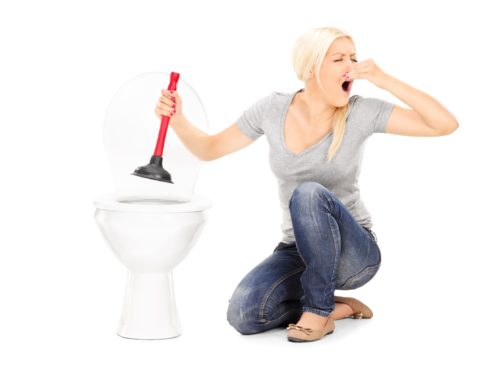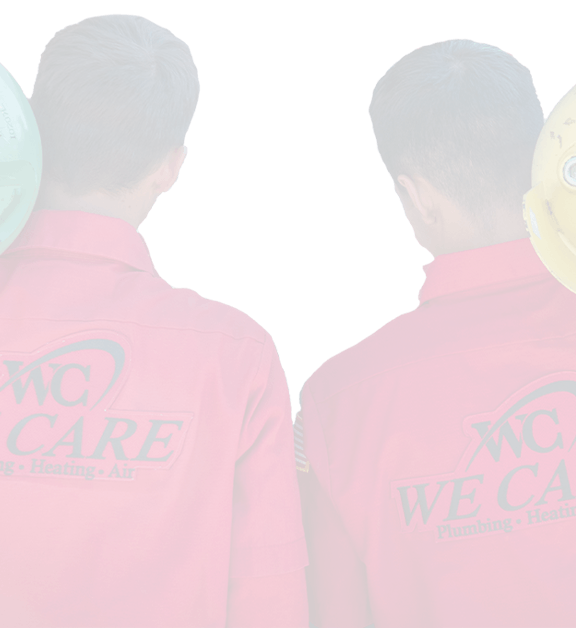For most homeowners, a major source of frustration is unclogging a toilet. Thankfully, unclogging a toilet is relatively easy to do. You need some basic tools, like a toilet auger, rubber O-rings, and a plunger. The following suggestions will help you unclog a toilet and prevent it from getting clogged again.
Prevent Water Damage
It can feel terrifying to watch the water levels in your toilet rise. You know that your toilet will overflow and you will have a gross mess to clean up. The first order of business is to prevent the toilet from overflowing.
Remove the lid from the tank. Push the flapper down. This prevents more water from dropping into the toilet bowl. Turn off the valve for the water supply that is situated behind the toilet near the floor.
Use the Proper Plunger Technique
It all starts with using the right plunger. The plunger should be a little bit larger than the drain. A traditional plunger will work. However, a flange plunger is better. Flange plungers have a little extension on the bottom that makes them a tad bit more effective.
The water level should be just deep enough so that the plunger cup is fully submerged. If there is too much water in the toilet bowl, you will make a mess as you plunge. If there is not enough water, you won’t get the proper seal needed for the plunger to work.
Next, make sure that all of the drains in the bathroom are plugged. This includes the drain for the bathtub and the drain for the bathroom sink. If nearby drains are plugged, you will get the maximum pressure against the clog.
Make sure that the rim of the plunger is touching all away around the drain. The plunger handle should be pointing straight up. You can improve the plunger seal by putting petroleum jelly around the rim of the plunger.
Once everything is in place, start to plunge. You should plunge up and down firmly for about 30 seconds. However, if the clog is stubborn, you may need to contact our toilet unclogging professionals at We Care Plumbing Heating & Air. We have the experience and tools needed to handle even the most stubborn toilet.
Using an Auger
Most homeowners don’t have an auger. However, when professional plumbers go to your home, we bring an auger as a standard part of our toolkit. The trick with using an auger is to direct the cable through the throat of the toilet.
Once the auger hits the clog, we give a little extra push to break through the clog. This requires putting the right amount of pressure on the cable and then turning the auger to get the cable to snake its way through the drain. This creates the opening that allows the water to travel to the sewer.
Our technicians will usually use a plunger in connection with the auger to break through any material that is still clinging to the hole left by the auger. In most homes, your bathtub and your toilet have the same drainage pipe. Once the toilet has been unclogged, we will look at your bathtub to ensure that the bathtub drainage is working correctly.
When Plans A and B Fail
If a plunger or an auger doesn’t work, it’s time to remove the toilet to get better access to the drain. After removing the toilet, plumbers use an industrial auger. This has more than 100 feet of steel cable. It’s enough cable to go all the way to the main sewage line to clear out the clog completely.
The first thing we will do is disconnect the water supply. We will use a wet vacuum to get rid of any standing water from the toilet. Next, the bolts of the toilet base are lifted off and the toilet is pushed forward. There will probably be a wax seal between the toilet and the floor. Before replacing the toilet, your plumber will replace the wax seal.
Once the clog has been removed, water will be allowed to run from the toilet supply line for a couple of minutes. This guarantees that the clog is completely gone. A new wax seal is applied, the bolts are screwed in, the water supply is reattached to the toilet, and the toilet is flushed a couple of times to ensure that everything is working as it should.
Why Do Toilet Clogs Happen?
Since clogged toilets are among the most common plumbing problems, it is good to identify possible causes. Let’s take a look at a few of them.
Older Toilets
In some cases, the problem is caused by the toilet itself. Old generation toilets are problematic because they have a low flush nature. The problem stems from low water pressure. This leads to low water pressure when pushing waste down the drain. Modern-day toilets are equipped with low-flow designs made for improved water efficiency.
Non-Flushable Items
People flush several non-flushable items down the drain. This includes sanitary napkins and tampons, which expand when you flush them. Cleaning wipes and paper towels can damage your pipes. Q-tips and cotton balls easily clump together when wet. Grease is another culprit. With time, it collects in your pipes. Not surprisingly, grease is the primary reason for sewer backups.
Using Too Much Toilet Paper
Toilet paper is flushable. But too much of it is a bad thing. Toilet paper is designed to disintegrate fast. If you flush too much of it, it can create a backup. This happens if there is a clog in your pipes. Paper compounds the situation as it mixes with other debris.
Problems with Your Main Sewer Line
Problems with your sewer line can lead to clogging. This is especially true if you have an old drain line. Waste in conjunction with the non-flushable items start to accumulate. If the clog is severe enough, it may cause multiple toilets in your home to backup. With this problem, you will need the assistance of a licensed plumber.
Preventing Toilet Clogs
The simplest way to prevent clogs is to flush the toilet properly. Pay close attention to what you flush down the toilet. Try the double flush. This is where, after eliminating waste, you flush the toilet once. After using the toilet paper, you throw it in the bowl and flush the toilet a second time.
Always clean your toilet regularly. This will help you determine if there are any issues with the toilet, indicating a possible buildup. Stay away from chemical drain cleaners. Many of them are too strong for pipes and can cause severe damage.
We Care and Want to Help
A clogged toilet is something that you might be able to prevent. However, if things go awry, We Care Plumbing Heating & Air is there to lend a helping hand. Our services include:
- Air conditioning repair, replacement, and maintenance
- Heating installation, maintenance, and repair
- Heat pump service
- Drain cleaning
- Plumbing repair and maintenance
- Water treatment
- Water heater services
- Tankless water heaters
- Reverse osmosis systems
- Air filtration
- Dehumidification, humidification and more
Throughout Temecula and all of Southern California, we are providing NATE- and NCI-certified services. We are proud to be partners with the major manufacturers in the heating and cooling industry. Contact We Care Plumbing Heating & Air today! Let us show you firsthand why thousands of homeowners trust us to protect the critical systems in their homes and offices.







